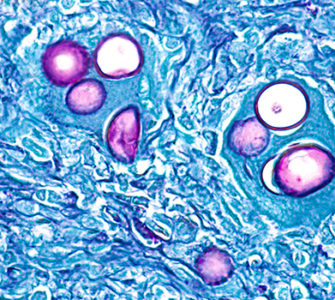Managing coccidia ‘leakage’ in antibiotic-free production systems
The US broiler industry has long relied on coccidial leakage to create immunity against coccidiosis in chickens. In antibiotic-free production systems, leakage occurs but can be more challenging to manage, Don Waldrip, DVM, technical services veterinarian, Zoetis, told Poultry Health Today.
In conventional flocks, leakage occurs when some Eimeria oocysts survive initial treatment with ionophore antibiotics and begin to multiply and re-infect birds, initiating immunity.
Coccidial leakage also occurs when non-ionophore anticoccidials are used to treat flocks raised without antibiotics, but these birds appear to have less tolerance for leakage, Waldrip says.
Exactly how much leakage occurs with non-ionophore anticoccidials varies with the product and the length of time the product has been used, he said.
Birds that probably performed well with ionophore antibiotics perform less well without them and tend to develop necrotic enteritis. That’s the major disease that occurs and is associated with clostridal organisms in the intestinal tract, Waldrip continued.
Managing coccidial leakage in flocks raised without antibiotics is “a new paradigm for the industry,” he said. “We’re learning, but it takes some time…”
In the meantime, Waldrip recommended more frequent necropsies to check the intestinal status of birds raised without antibiotics, which then allows producers to take remedial actions sooner.
Anticoccidial-sensitivity testing should also be part of the control plan. “You need more tools, [and] you need more information so that you can respond properly,” he said.
Posted on June 27, 2017

















